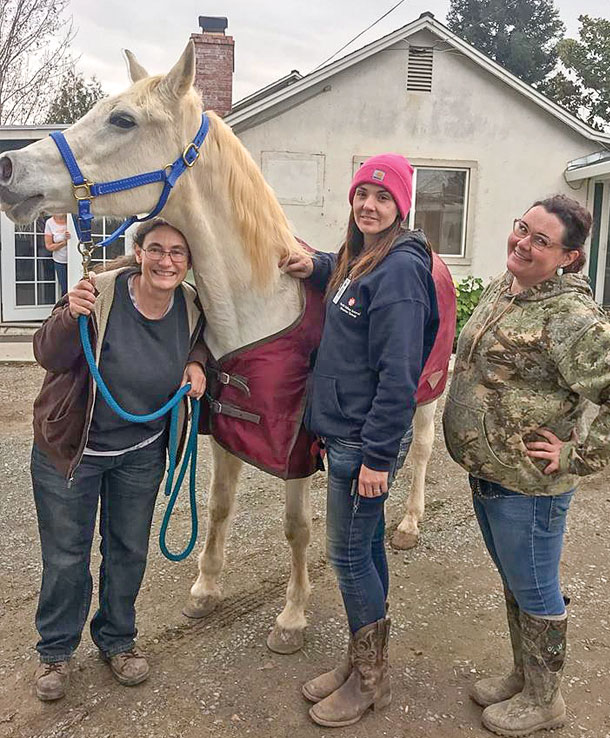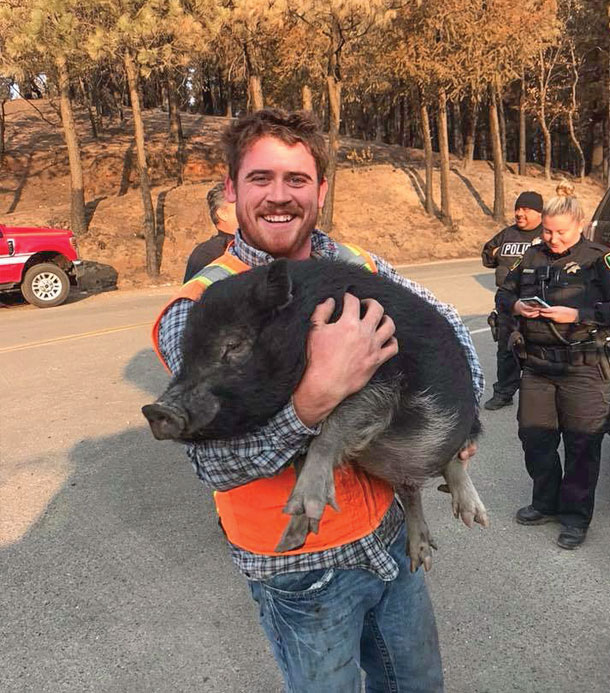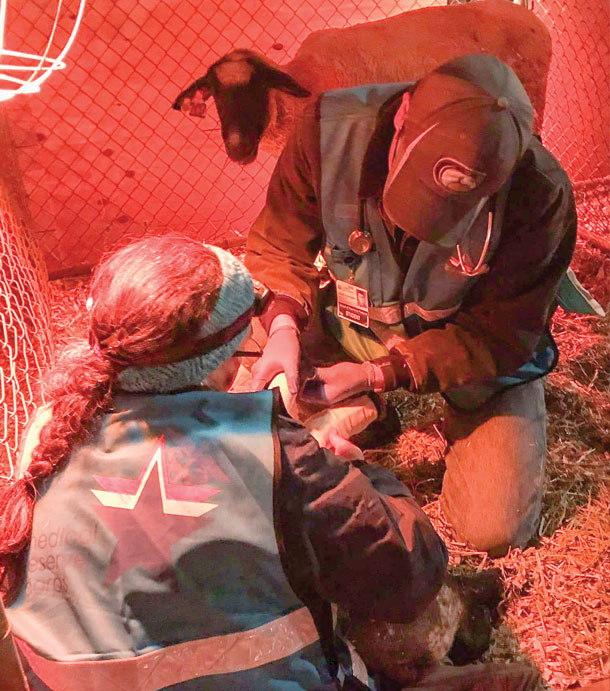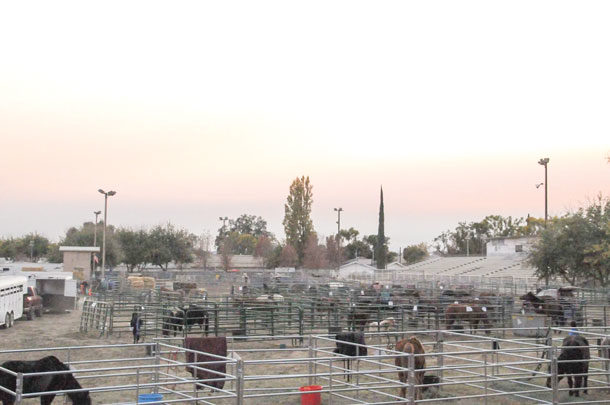The fire claimed more than 100 lives and leveled more than 18,000 structures. What wasn’t covered in national media was the hundreds of animals displaced, nearly 40,000 acres of burnt rangeland and the herculean effort mounted by the agriculture community to aid fellow producers during a time of need. The cause of the fire is still under investigation.
What about the animals?
The afternoon the Camp Fire started, University of California Extension livestock and natural resource adviser Tracy Schohr was driving to her office when she noticed horse trailers lined up at the Butte County Fairgrounds in Gridley, California. “Huh. That’s weird,” she thought.
Then her phone started ringing.
“I need your help!” A friend was calling to ask about setting up the fairgrounds as a horse evacuation center. Schohr knew the fairgrounds had zilch in the way of infrastructure for horses. She raced home.
“We tore down every panel at my house and took them to the fairgrounds,” she says. “I started calling every rancher that lived nearby to ask them to bring panels. There was literally nowhere to put horses.”
Dozens of ranchers would heed the call for help, and not just for panels. Over the coming weeks, the agriculture community would send hay, grain, salt, veterinary care and volunteers in droves.
The Gridley fairgrounds became the large-animal evacuation center for the duration of the Camp Fire. It was an operation that ran on volunteerism, sweat, tears, love and fellowship.
“In a time of devastation … the images on the TV … the fear that people were just trying to get out alive … to have the ag community step up by leaps and bounds to rescue animals and go into a war zone to save horses and goats and chickens – there were cattlemen picking up chickens! It was just so incredible,” Schohr remembers.
The fairgrounds in Gridley accommodated nearly 900 livestock animals at its fullest, and more than 250 horses on its busiest day.
Heeding the call
When Jeni Rios of Smith, Nevada, saw the devastation of the Camp Fire in the news, she knew there were going to be people in need. When she heard about the Gridley fairgrounds being staged as the large-animal evacuation center, Rios knew exactly what she could do.
She and her husband bought their western Nevada hay farm less than a year ago. They grow hay on 110 acres and run a small retail hay delivery business. Her husband told her he could take a load of hay in their delivery truck.
Why not?
Rios posted it on their family’s Facebook page and asked if anyone nearby had hay or cash they wanted to pitch in since she was making the trip anyway.
The response was overwhelming.
Their little delivery truck of hay turned into an entire semi-load. The man they bought their ranch from hauled it over to Gridley for free.
“I don’t want to be given all the credit,” Rios demurs. “This is what a community does. It doesn’t matter that they’re California and we’re Nevada. We’re all people. We’re all Americans. We just needed to work together.”
The “hup-to” of people like Rios meant that owners of rescued animals at the Gridley fairgrounds were spared added financial hardship during a trying time. Truckloads of donated hay came in from as far away as Nevada and Oregon.

Animal owners weren’t charged a dime for feed or care received at the fairgrounds, and many left with donated saddle pads, water buckets, halters and more to replace items lost in the fire.
No animal too wily
Justin Bruning was in Camp Fire country for his day job as a utility contractor when he saw a runaway pig.

“I used to raise pigs for the Nevada County Fair every year, so I had plenty of experience catching pigs,” he says.
The 50-pound potbelly pig didn’t particularly want to be caught by a smiling guy in a high-visibility vest, but Bruning wasn’t daunted.
“I wasn’t going to let a pig suffer in an already trying time, so I pulled over and roped him and brought him to the sheriff’s down the road. It’s all I could do,” Bruning shrugs.
Volunteers by the droves
The first afternoon of the fire, it quickly became clear to Tracy Schohr that she was going to need more help. Evacuated animals kept arriving to the Gridley fairgrounds.
“I called the local high school and said, ‘I need kids to set up panels and to run gates,’” she remembers. Gridley High School agriculture teacher Jenny Kaslin took the call. She sent her FFA kids over right away. They got straight to work in teams of three.

“The early days at the fairgrounds were organized chaos,” Kaslin says. “There was a constant incoming of animals and donations, which was incredible to see, but also heartbreaking. The animals needed so much care and attention.”
Kaslin’s FFA chapter helped coordinate the cleaning and feeding schedules for large animals at the fairgrounds. Countless FFA and 4-H chapters from around the region turned up to lend a hand. Kaslin said social media was an especially important tool in coordinating volunteers and supplies.
At the same time her FFA kids were helping out with the fire, Kaslin found out she was being evacuated from her own home.
“It was one of the most beautiful and one of the worst things to be a part of,” Kaslin says.
As a teacher, Kaslin felt immensely proud that the values she tries to impart – brotherhood, leadership – came to fruition in front of her eyes. “Our students jumped in without hesitation,” she says. But it was still a very challenging time.
“I’ll never forget the burned animals, and our students helping where they could. I’ll also never forget the selflessness of so many members of our community – and seeing humanity come together in a time of tragedy. It was an experience our students will take with them wherever they go.” ![]()
PHOTO 1: At its fullest, the Gridley fairgrounds held nearly 900 livestock in need during the Camp Fire.
PHOTO 2: A happy horse owner reclaims her horse. Animal owners were not charged for feed, vet care or labor while their animals were being cared for at the Gridley fairgrounds in the aftermath of the Camp Fire.
PHOTO 3: All the veterinary care provided to animals at the Gridley fairgrounds was donated. In this picture, a vet from University of California – Davis tends to a newborn lamb. Photos provided by Tracy Schohr.
PHOTO 4: Justin Bruning’s formative years in the FFA paid off during the Camp Fire. The utility contractor was at work when he saw a loose pig. He roped it, caught it and passed it off to a sheriff for rescue. Photo provided by Justin Bruning.
Monica Gokey is a freelance writer.










